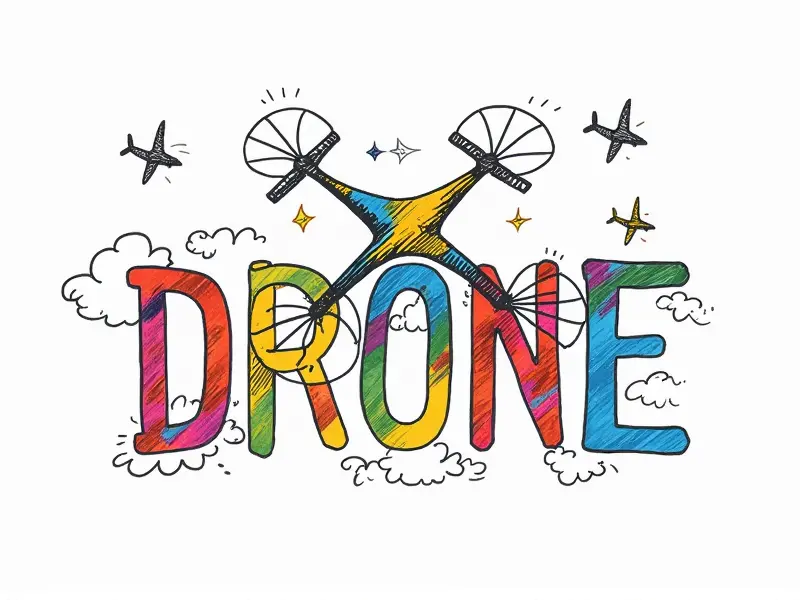How does GPS work in drones?

How Does GPS Guide Drones?
Drones rely on Global Positioning System (GPS) technology to navigate and maintain their position accurately. The GPS system consists of a network of satellites orbiting the Earth, providing precise location data to any device equipped with a receiver. For drones, this means receiving signals from multiple satellites simultaneously to calculate its exact latitude, longitude, altitude, speed, and direction.
GPS plays a crucial role in drone navigation by enabling autonomous flight modes such as waypoint navigation, return-to-home (RTH), and follow-me features. These functionalities ensure that the drone can operate safely and efficiently without constant manual control from the operator.
Understanding Drone GPS Functionality
The functionality of GPS in drones is based on triangulation using signals from at least four satellites to determine its position accurately. This process involves measuring the time it takes for a signal to travel from each satellite and converting that into distance, which helps pinpoint the drone's location.
Drone GPS systems also incorporate additional features like barometric pressure sensors, accelerometers, and gyroscopes to enhance accuracy and stability during flight. These components work in tandem with GPS data to provide real-time information about altitude, orientation, and movement.
Mastering Drone Flight with GPS
To master drone flight using GPS technology, it's essential to understand how different modes interact with the system. For instance, waypoint navigation allows pilots to pre-program a series of coordinates for the drone to follow autonomously. This feature is particularly useful in surveying large areas or conducting aerial photography.
Another critical aspect is the return-to-home (RTH) function, which uses GPS data to guide the drone back to its starting point if it loses connection with the controller or reaches a preset battery threshold. Ensuring that your drone's GPS system is calibrated and functioning correctly before each flight can prevent unexpected issues.
The Role of GPS in FPV Racing Drones
First-person view (FPV) racing drones require precise navigation capabilities to compete effectively in high-speed races. While traditional GPS systems may not be as critical for these fast-moving aircraft, they still benefit from basic GPS functionality such as altitude hold and position lock.
In FPV racing, the focus is more on real-time video transmission and manual control rather than autonomous flight modes. However, having a reliable GPS system can provide an edge by maintaining stability during complex maneuvers and ensuring accurate positioning for optimal race performance.
Secrets of Drone GPS Accuracy
Achieving high accuracy in drone GPS systems involves several factors including satellite signal quality, receiver sensitivity, and environmental conditions. To improve accuracy:
- Select a high-quality GPS module: Choose a receiver with multiple channels to track more satellites simultaneously.
- Optimize antenna placement: Position the GPS antenna away from metal or electronic components that could interfere with signals.
- Utilize differential correction services: These services provide enhanced accuracy by correcting errors in satellite data.
Inside Drone GPS Technology
The inner workings of drone GPS technology involve complex algorithms and hardware integration. The GPS receiver processes signals from satellites, while onboard processors interpret this information to control the drone's movements.
Modern drones often integrate advanced features like RTK (Real-Time Kinematic) positioning for centimeter-level accuracy in specialized applications such as precision agriculture or construction site mapping.
Simplified Guide to Drone GPS
To simplify understanding of drone GPS, consider the following key points:
- Basic Functionality: Receives signals from satellites to determine location and movement.
- Data Integration: Combines GPS data with other sensors for enhanced accuracy and stability.
- User Benefits: Enables autonomous flight modes, precise navigation, and safety features like RTH.
GPS: The Brain Behind Flying Drones
In essence, GPS serves as the brain of a drone's navigation system. It provides critical information for maintaining position, executing complex maneuvers, and ensuring safe operation. Without reliable GPS functionality, many advanced features that make drones versatile tools would be impossible to achieve.
Why GPS is Essential for Drones
The importance of GPS in drones cannot be overstated. From basic flight control to sophisticated applications like surveying and inspection, GPS ensures accuracy, reliability, and efficiency. It enables drones to operate autonomously over large areas while maintaining precise positioning.
Navigating with Drone GPS Systems
Effective navigation using drone GPS systems involves understanding how to configure settings for optimal performance in various environments. This includes setting up waypoints, adjusting altitude hold parameters, and configuring safety features like RTH.
Pilots should also be aware of potential challenges such as signal interference or limited satellite visibility in urban canyons or dense forests. Proper planning and equipment selection can mitigate these issues.
GPS Navigation in Drones Simplified
To summarize, GPS navigation in drones simplifies complex flight tasks by providing real-time location data and enabling autonomous modes. By leveraging this technology effectively, drone operators can enhance their capabilities across a wide range of applications.
Conclusion
In conclusion, GPS is an indispensable component for modern drones, offering unparalleled precision and reliability in navigation. Whether you're flying FPV racing drones or conducting professional surveys, understanding how GPS works within your device will significantly improve your operational efficiency and safety.

